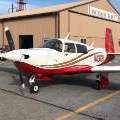IFR Pilots, what are your personal minimums?
IFR Minimums
51 members have voted
-
1. What are your IFR personal enroute minimums?
-
I don't fly IFR2
-
VMC (fly IFR but only on visual days)0
-
3,000+ foot layer that I can easily get on top of1
-
2,000+ foot layer that I can easily get on top of3
-
2,000+ foot ceiling but in the soup all the way3
-
1,000+ foot ceiling but in the soup all the way13
-
At least alternate minimums at nearby airports16
-
At least landing minumums at nearby airports9
-
Minimum minimums down to 0/0 on the ground4
-
-
2. What are your IFR personal departure minimums?
-
I don't fly IFR2
-
VMC (fly IFR but only on visual days)0
-
Same as my enroute minimums6
-
If I can see all nearby obstacles/mountains1
-
1,000+ foot ceiling but in the soup all the way15
-
Departure minimums (although not mandatory for Part 91)19
-
Below departure minimums6
-
0/02
-
-
3. What are your IFR personal arrival minimums?
-
I don't fly IFR2
-
VMC (fly IFR but only on visual days)0
-
Visual approach0
-
Instrument approach becoming visual by the FAF5
-
Alternate minimums at destination airport3
-
Double the IAP minimums6
-
IAP minimums + 300ft10
-
IAP minimums + 200ft6
-
IAP minimums + 100ft1
-
IAP minimums18
-
Below IAP minimums0
-
-
Members Online


Recommended Posts
Join the conversation
You can post now and register later. If you have an account, sign in now to post with your account.